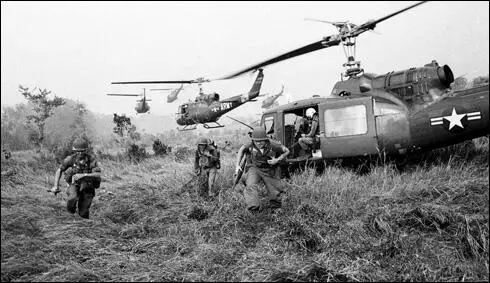On this day on 11th December
On this day in 1882 Fiorello La Guardia is born in New York City. The family moved to Hungary in 1898. La Guardia worked at the American consulates in Budapest, Trieste and Rijeka before returning to the United States in 1906.
While working as an interpreter for the United States Immigration Service at Ellis Island, La Guardia studied law at New York University. La Guardia was admitted to the bar in 1910 but his real love was politics and in 1916 was elected to the House of Representatives as a progressive Republican.
When the United States entered the First World War La Guardia joined the US Air Service and served on the Italian-Austrian front. After the Armistice La Guardia returned to Congress. An opponent of prohibition, La Guardia campaigned for women's suffrage and an end to child labour.
In 1924 Vito Marcantonio joined Fiorello La Guardia in supporting Robert La Follette, who was the presidential candidate of the Progressive Party. This resulted in La Guardia losing the Republican Party nomination. "The Democratic Party, as usual, sought to defeat him. La Guardia asked me to actively participate in that campaign, and together with a handful of our friends and neighbors in East Harlem, we conducted a successful campaign for him and for LaFollette in our congressional district." In 1932 he co-sponsored with George Norris, the Norris-La Guardia Act, which restricted the courts' power to ban strikes.
La Guardia was elected mayor of New York City in 1933. Over the next twelve years he developed a reputation as an honest and efficient administrator. A supporter of the New Deal, La Guardia expanded the city's social-welfare services and began a program of providing low-cost housing.
In 1945 La Guardia decided against seeking re-election in 1945. The following year he became director general of the United Nations Relief and Rehabilitation Administration. Fiorello La Guardia died on 20th September, 1947. His autobiography, Making of an Insurgent, was published posthumously in 1948.
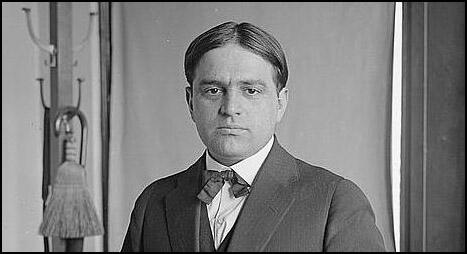
On this day in 1906 a reception banquet is held for Anne Cobden Sanderson on her release from prison. Those who attended included Beatrice Harraden, Minnie Baldock and Annie Kenney at the banquet. For several years Sanderson had been a member of the National Union of Women's Suffrage Societies. However, frustrated by its lack of success, she joined the Women Social & Political Union in 1905. She was the first prominent constitutional suffragist to defect to the militants. In October 1906 Anne, along with members of the WSPU, Mary Gawthorpe, Charlotte Despard and Emmeline Pankhurst, was arrested in a large demonstration outside the House of Commons. Her friend, George Bernard Shaw wrote in The Times, that "one of nicest women in England suffering from the coarsest indignity" of being in Holloway Prison.
In court Anne said: "We have talked so much for the Cause now let us suffer for it... I am a law breaker because I want to be a law maker." She was sentenced to two months' imprisonment. Millicent Fawcett wrote to The Times on 27th October 1906 to complain about the press reports of her behaviour in court: "I have known Mrs Cobden Sanderson for 30 years. I was not in the police-court on Wednesday when she was before the magistrate, but I find it absolutely impossible to believe that she bit, or scratched, or screamed, or behaved otherwise than like the refined lady she is."
In 1907 some leading members of the WSPU began to question the leadership of Emmeline Pankhurst and Christabel Pankhurst. These women objected to the way that the Pankhursts were making decisions without consulting members. Teresa Billington-Greig pointed out the absurdity of women fighting for votes in an organisation that refused them a voice in their own campaign. In the autumn of 1907, Anne Cobden Sanderson, Teresa Billington-Greig, Elizabeth How-Martyn, Dora Marsden, Helena Normanton, Anne Cobden Sanderson, Margaret Nevinson and Charlotte Despard and seventy other members of the WSPU left to form the Women's Freedom League (WFL).
According to Elizabeth Crawford, the author of The Suffragette Movement (1999): "Anne Cobden Sanderson proved one of the WFL's most tireless campaigners, speaking at outdoor meetings and continuing to take part in militant protests." She was arrested on 19th August 1909 while picketing the door of 10 Downing Street in order to present a petition to Herbert Asquith.
In October 1909 Anne Cobden Sanderson helped establish the Tax Resistance League (TRL). Founder members of the organisation included Louisa Garrett Anderson, Margaret Nevinson, Cicely Hamilton, Edith How-Martyn, Sime Seruya, Maud Arncliffe Sennett, Lena Ashwell, Dora Montefiore, Beatrice Harraden, Evelyn Sharp and Eveline Haverfield. The TRL remained under the auspices of the Women's Freedom League. The motto adopted by the TRL was "No Vote No Tax".
At its annual party conference in January 1912, the Labour Party passed a resolution committing itself to supporting women's suffrage. This was reflected in the fact that all Labour MPs voted for the measure at a debate in the House of Commons on 28th March. Soon afterwards Henry N. Brailsford and Kathleen Courtney, entered negotiations with the Labour Party as representatives of NUWSS.
In April 1912, the National Union of Women's Suffrage Societies announced that it intended to support Labour Party candidates in parliamentary by-elections.The NUWSS established an Election Fighting Fund (EFF) to support these Labour candidates. Anne Cobden Sanderson, who had been a long-time supporter of the Labour Party, contributed generously to the EEF.
In July 1914 the NUWSS argued that Asquith's government should do everything possible to avoid a European war. Two days after the British government declared war on Germany on 4th August 1914, Millicent Fawcett declared that it was suspending all political activity until the conflict was over. Although the NUWSS supported the war effort, it did not follow the WSPU strategy of becoming involved in persuading young men to join the armed forces.
Despite pressure from members of the NUWSS, Fawcett refused to argue against the First World War. Her biographer, Ray Strachey, argued: "She stood like a rock in their path, opposing herself with all the great weight of her personal popularity and prestige to their use of the machinery and name of the union." At a Council meeting of the National Union of Women's Suffrage Societies held in February 1915, Fawcett attacked the peace efforts of people like Mary Sheepshanks. Fawcett argued that until the German armies had been driven out of France and Belgium: "I believe it is akin to treason to talk of peace." Anne Cobden Sanderson was a pacifist and was once again in opposition to Fawcett.
In January 1915 Mary Sheepshanks published an open Christmas letter to the women of Germany and Austria, signed by 100 British women pacifists. The signatories included Anne Cobden Sanderson, Emily Hobhouse, Margaret Bondfield, Maude Royden, Sylvia Pankhurst, Eva Gore-Booth, Margaret Llewelyn Davies and Marion Phillips. It included the following: "Do not let us forget our very anguish unites us, that we are passing together through the same experiences of pain and grief. We pray you to believe that come what may we hold to our faith in peace and goodwill between nations."
After the war Anne Cobden Sanderson remained active in the Labour Party in Hammersmith. Her husband, Thomas James Sanderson, died in 1922. As her biographer, A. C. Howe, pointed out: "Following Thomas's death in 1922, Annie settled at great personal cost a lawsuit brought against her by Sir Emery Walker, seeking compensation for the typeface her husband had thrown into the Thames on closing the Doves Press in 1917." Sanderson died at 15 Upper Mall, Hammersmith, on 2nd November 1926.
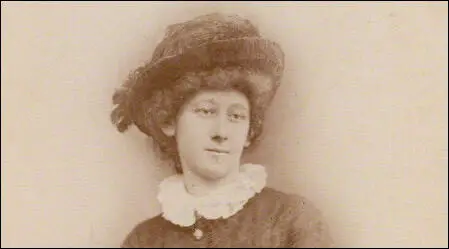
On this day in 1918 Alexander Solzhenitsyn was born. He attending Rostov University where he studied mathematics and took a correspondence course in literature at Moscow State University.
During the Second World War Solzhenitsyn joined the Red Army and rose to the rank of artillery captain and was decorated for bravery. While serving on the German front in 1945 he was arrested for criticizing Joseph Stalin in a letter to a friend.
Solzhenitsyn was found guilty and sent to a Soviet Labour Camp in Kazakhstan. His first novel, One Day in the Life of Ivan Denisovich, set in a labour camp, was initially banned but after the intervention of Nikita Khrushchev, it was published in 1962.
His next novel, The First Circle (1968), described the lives of a group of scientists forced to work in a Soviet research centre, and Cancer Ward (1968), based on his experiences as a cancer patient, were both banned after Nikita Khrushchev fell from power. In 1969 Solzhenitsyn was expelled from the Soviet Writers' Union and deported from Moscow.
In 1970 he was awarded the Nobel Prize for Literature but was not allowed to collect it in Stockholm. Solzhenitsyn continued to write and his novel, August 1914 (1971) on the First World War, was banned in the Soviet Union but was published abroad. This was followed by his reminiscences, The Gulag Archipelago (1973). This led to his arrest and after being charged with treason, stripped of his citizenship, and was deported from the Soviet Union.
Solzhenitsyn, who collected the Nobel Prize for Literature in 1974, went to live in Vermont in the USA. He continued to write and Lenin in Zurich was published in 1975. This was followed by two works of non-fiction, The Oak and the Calf(1980) and The Mortal Danger (1983) and the novel, November 1916 (1993).
In 1994 Mikhail Gorbachev restored Solzhenitsyn's citizenship and the charge of treason was dropped. Later that year he returned to the Soviet Union where he called for a return to pre-Bolshevik autocratic government.
Alexander Solzhenitsyn died of heart failure near Moscow on 3rd August 2008, at the age of 89.
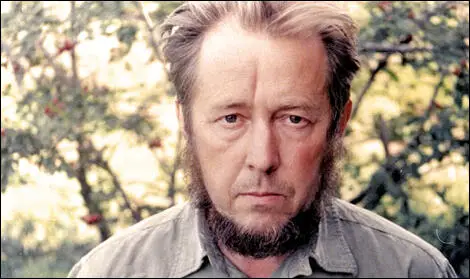
On this day in 1920 cartoonist Frederick Henry Townsend died while playing golf. Townsend was born in London on 26th February 1868. He studied at Lambeth School of Art where other students included Leonard Raven-Hill and Arthur Rackham. One of his first jobs was to illustrate two stories by Oscar Wilde that appeared in Court & Society Review.
Townsend contributed to several newspapers and magazine including Punch Magazine, The Daily Graphic, The Tatler, The Idler, The Pall Mall Gazette, The Strand Magazine, News Chronicle and Illustrated London News. Books illustrated by Townsend included Maid Marian (1895), Jane Eyre (1896), Shirley (1897), A Tale of Two Cities (1897), The Scarlet Letter (1897) and Rob Roy (1897).
In 1905 Townsend became the first Art Editor of Punch Magazine. He also contributed cartoons to the magazine and illustrated the "Parliamentary Sketches". According to Mark Bryant Townsend "used models and drew roughs in pencil on chalk-surface paper, than transferred these in pen and ink on to Bristol Board."
During the First World War he served in the Special Constabulary. He also produced several patriotic cartoons including the famous No Thoroughfare after the German invasion of Belgium.
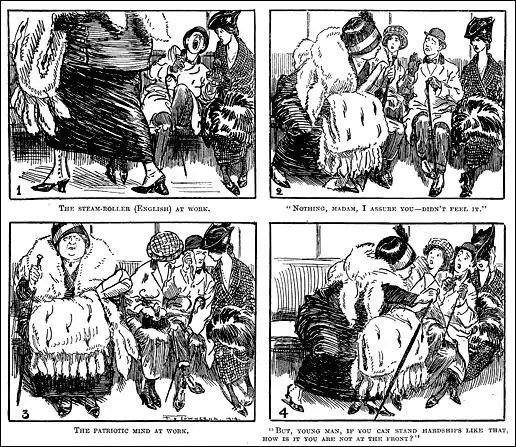
On this day in 1923 Elizabeth Boger (Betsy Blair) was born in Cliffside Park, New Jersey. After leaving high school she became a model and dancer in New York City.
Blair married Gene Kelly in 1941. Soon afterwards she won the lead part in The Beautiful People, a play written by William Saroyan. During the Second World War she concentrated on theatre work and bringing up her daughter.
Blair appeared in The Guilt of Janet Ames (1947). This was followed by A Double Life (1947), Another Part of the Forest (1948) and The Snake Pit (1948). She was also active in the Screen Actors Guild and was a strong advocate of setting up an anti-discrimination committee.
In 1947 the House of Un-American Activities Committee (HUAC) began an investigation into the Hollywood Motion Picture Industry. The HUAC interviewed 41 people who were working in Hollywood. These people attended voluntarily and became known as "friendly witnesses". During their interviews they named several people who they accused of holding left-wing views.
One of those named, Bertolt Brecht, an emigrant playwright, gave evidence and then left for East Germany. Ten others: Herbert Biberman, Lester Cole, Albert Maltz, Adrian Scott, Samuel Ornitz, Dalton Trumbo, Edward Dmytryk, Ring Lardner Jr., John Howard Lawson and Alvah Bessie refused to answer any questions.
Known as the Hollywood Ten, they claimed that the 1st Amendment of the United States Constitution gave them the right to do this. The House of Un-American Activities Committee and the courts during appeals disagreed and all were found guilty of contempt of congress and each was sentenced to between six and twelve months in prison.
Roy Brewer, a close friend of Ronald Reagan was appointed to the Motion Picture Industry Council. Brewer commissioned a booklet entitled Red Channels. Published on 22nd June, 1950, and written by Theodore Kirkpatrick, a former FBI agent and Vincent Harnett, a right-wing television producer, it listed the names of 151 writers, directors and performers who they claimed had been members of subversive organisations before the Second World War but had not so far been blacklisted.
Betsy Blair, because of her support for the anti-discrimination committee and other progressive measures, was one of those named in Red Channels. A free copy was sent to those involved in employing people in the entertainment industry. All those people named in the pamphlet were blacklisted until they appeared in front of the House of Un-American Activities Committee (HUAC) and convinced its members they had completely renounced their radical past. Blair refused to do this and she was therefore unable to obtain employment in Hollywood.
With the active support of the screenwriter, Paddy Chayefsky, Blair broke the blacklist by appearing in the film Marty (1955). The movie won the Academy Award for Best Picture and Blair was nominated as best supporting actress. She also won the best actress award at the Cannes Film Festival. Despite this success Blair received no more job offers in Hollywood and she decided to move to Europe.
Blair appeared in Rencontre à Paris (1956), Calle Mayor (1956), Il Grido (1957), Lies My Father Told Me (1960), I Delfini (1960), Senilità (1962) and All Night Long (1962). In 1963 she met and married the film director, Karl Reisz. Now based in London she concentrated on theatre work. Blair also appeared in several television plays.
In 1988, Costa-Gavras, the left-wing film director, persuaded her to return to Hollywood to appear in Betrayed. Her autobiography, The Memory of All That: Love and Politics in New York, Hollywood and Paris, was published in 2003. Betsy Blair died on 13th March 2009.
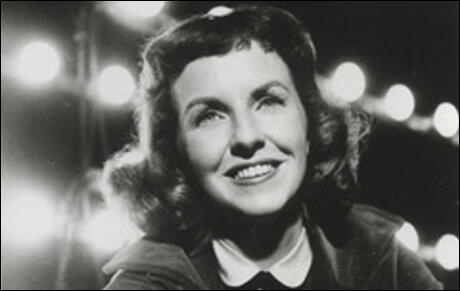
On this day in 1941 Arthur Charles Wellesley, 5th Duke of Wellington, died. Arthur, the son of Charles Wellesley , and his wife, Kathleen Bulkeley Williams on 9th June 1876. His father inherited the ducal title and vast Wellington estates upon his elder brother's death in 1900, and became the 4th Duke of Wellington.
Wellesley was educated at Eton College (1890-1895) before attending Trinity College. After leaving Cambridge University he was commissioned as a lieutenant in the Lincolnshire Regiment. After the outbreak of the Second Boer War in 1899, he joined the regular army as a second lieutenant in the Grenadier Guards and was part of a detachment sent to South Africa.
Wellesley resigned his commission in 1903. He returned to active service as a second lieutenant in 1915, during the First World War. Wellesley resigned from the British Army in 1919.
On the death of his father in 1934 he became the 5th Duke of Wellington. He held extreme right-wing opinions and was sympathetic to the Nazi Party and in 1935 he joined the Anglo-German Fellowship. He also served as President of the Nordic League, which was a leading anti-semitic organisation.
In May 1939 Archibald Ramsay founded a secret society called the Right Club. This was an attempt to unify all the different right-wing groups in Britain. Or in the leader's words of "co-ordinating the work of all the patriotic societies". In his autobiography, The Nameless War, Ramsay argued: "The main object of the Right Club was to oppose and expose the activities of Organized Jewry, in the light of the evidence which came into my possession in 1938. Our first objective was to clear the Conservative Party of Jewish influence, and the character of our membership and meetings were strictly in keeping with this objective."
Members of the Right Club included the Duke of Wellington, William Joyce, Anna Wolkoff, Joan Miller, A. K. Chesterton, Francis Yeats-Brown, Lord Redesdale, Duke of Westminster, E. H. Cole, John Stourton, Thomas Hunter, Aubrey Lees, Ernest Bennett, Charles Kerr, Samuel Chapman, John MacKie, James Edmondson, Mavis Tate, Marquess of Graham, Margaret Bothamley, Randolph Stewart, 12th Earl of Galloway and Cecil Serocold Skeels.
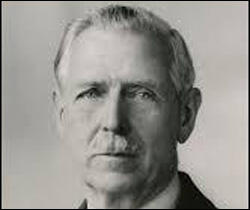
On this day in 1959, Colonel Joseph Caldwell King, chief of CIA's Western Hemisphere Division, suggests Operation 40. King sent a confidential memorandum to Allen W. Dulles, the director of the Central Intelligence Agency. King argued that in Cuba there existed a "far-left dictatorship, which if allowed to remain will encourage similar actions against U.S. holdings in other Latin American countries."
As a result of this memorandum Dulles established Operation 40. It obtained this name because originally there were 40 agents involved in the operation. Later this was expanded to 70 agents. The group was presided over by Richard Nixon. Tracy Barnes became operating officer of what was also called the Cuban Task Force. The first meeting chaired by Barnes took place in his office on 18th January, 1960, and was attended by David Atlee Phillips, E. Howard Hunt, Jack Esterline, and Frank Bender.
According to Fabian Escalante, a senior officer of the Cuban Department of State Security (G-2), in 1960 Richard Nixon recruited an "important group of businessmen headed by George Bush (Snr.) and Jack Crichton, both Texas oilmen, to gather the necessary funds for the operation". This suggests that Operation 40 agents were involved in freelance work.
It is known that at this time that George Bush and Jack Crichton were involved in covert right-wing activities. In 1990 Common Cause Magazine argued that: "The CIA put millionaire and agent George Bush in charge of recruiting exiled Cubans for the CIA’s invading army; Bush was working with another Texan oil magnate, Jack Crichton, who helped him in terms of the invasion." (3) This story was linked to the release of "a memorandum in that context addressed to FBI chief J. Edward Hoover and signed November 1963, which reads: Mr. George Bush of the CIA"
Reinaldo Taladrid and Lazaro Baredo claim that in 1959 George Bush was asked “to cooperate in funding the nascent anti-Castro groups that the CIA decided to create”. The man “assigned to him for his new mission” was Féliz Rodríguez.
Daniel Hopsicker also takes the view that Operation 40 involved private funding. In the book, Barry and the Boys: The CIA, the Mob and America’s Secret History, he claims that Richard Nixon had established Operation 40 as a result of pressure from American corporations which had suffered at the hands of Fidel Castro.
Webster Griffin Tarpley and Anton Chaitkin have argued that George Bush was very close to members of Operation 40 in the early 1960s. In September, 1963, Bush launched his Senate campaign. At that time, right-wing Republicans were calling on John F. Kennedy to take a more aggressive approach towards Castro. For example, in one speech Barry Goldwater said: “I advocate the recognition of a Cuban government in exile and would encourage this government every way to reclaim its country. This means financial and military assistance.” Bush took a more extreme position than Goldwater and called for a “new government-in-exile invasion of Cuba”. As Tarpley and Chaitkin point out, beneficiaries of this policy would have been "Theodore Shackley, who was by now the station chief of CIA Miami Station, Felix Rodriguez, Chi Chi Quintero, and the rest of the boys" from Operation 40.
Paul Kangas is another investigator who has claimed that George Bush was involved with members of Operation 40. In an article published in The Realist in 1990, Kangas claims: "Among other members of the CIA recruited by George Bush for (the attacks on Cuba) were Frank Sturgis, Howard Hunt, Bernard Baker and Rafael Quintero.” In an article published in Granma in January, 2006, the journalists Reinaldo Taladrid and Lazaro Baredo argued that “Another of Bush’s recruits for the Bay of Pigs invasion, Rafael Quintero, who was also part of this underworld of organizations and conspiracies against Cuba, stated: If I was to tell what I know about Dallas and the Bay of Pigs, it would be the greatest scandal that has ever rocked the nation."
Fabian Escalante names William Pawley as being one of those who was lobbying for the CIA to assassinate Fidel Castro. (9) Escalante points out that Pawley had played a similar role in the CIA overthrow of Jacobo Arbenz Guzmán in Guatemala. Interestingly, the CIA assembled virtually the same team that was involved in the removal of Arbenz: Tracey Barnes, Richard Bissell, David Morales, David Atlee Phillips, E. Howard Hunt, Rip Robertson and Henry Hecksher. Added to this list was several agents who had been involved in undercover operations in Germany: Ted Shackley, Tom Clines and William Harvey.
According to Daniel Hopsicker, the following were also involved in Operation 40: Edwin Wilson, Barry Seal, William Seymour, Frank Sturgis and Gerry Hemming. It has also been pointed out that Operation 40 was not only involved in trying to overthrow Fidel Castro. Sturgis has claimed: "this assassination group (Operation 40) would upon orders, naturally, assassinate either members of the military or the political parties of the foreign country that you were going to infiltrate, and if necessary some of your own members who were suspected of being foreign agents."
Virtually every one of the field agents of Operation 40 were Cubans. This included Antonio Veciana, Luis Posada, Orlando Bosch, Rafael Quintero, Roland Masferrer, Eladio del Valle, Guillermo Novo, Rafael Villaverde, Virgilio Gonzalez, Carlos Bringuier, Eugenio Martinez, Antonio Cuesta, Hermino Diaz Garcia, Barry Seal, Felix Rodriguez, Ricardo Morales Navarrete, Juan Manuel Salvat, Isidro Borjas, Virgilio Paz, Jose Dionisio Suarez, Felipe Rivero, Gaspar Jimenez Escobedo, Nazario Sargent, Pedro Luis Diaz Lanz, Jose Basulto, and Paulino Sierra.
CIA asset, Don Bohning (AMCARBON-3) argues in his book, The Castro Obsession (2005), that Operation 40 was not actually established until March 1961. Bohning quotes one of his sources as saying that the group's initial objective was to take over the administration of "the towns and cities liberated by the invasion force, roundup government officials and sympathizers and secure the files of the government's different intelligence services" after the Bay of Pigs operation.
However, Larry Hancock in his book, Someone Would Have Talked (2006) provides evidence that Operation 40 did not come to an end after the failed Bay of Pigs operation. Hancock reveals that Jose Sanjenis Perdomo was closely involved with David Morales in 1962 and 1963. He points out that "new documents provided by researcher Malcolm Blunt confirms that Sanjenis, the individual in charge of Operation 40, was actually the number one exile in the AMOT organization trained and prepared by David Morales."
Most of these characters had been associated with the far-right in Cuban politics. Rumours soon became circulating that it was not only Fidel Castro that was being targeted. On 9th June, 1961, Arthur Schlesinger sent a memo to Richard Goodwin: “Sam Halper, who has been the Times correspondent in Havana and more recently in Miami, came to see me last week. He has excellent contracts among the Cuban exiles. One of Miro's comments this morning reminded me that I have been meaning to pass on the following story as told me by Halper. Halper says that CIA set up something called Operation 40 under the direction of a man named (as he recalled) Captain Luis Sanjenis, who was also chief of intelligence. (Could this be the man to whom Miro referred this morning?) It was called Operation 40 because originally only 40 men were involved: later the group was enlarged to 70. The ostensible purpose of Operation 40 was to administer liberated territories in Cuba. But the CIA agent in charge, a man known as Felix, trained the members of the group in methods of third degree interrogation, torture and general terrorism. The liberal Cuban exiles believe that the real purpose of Operation 40 was to "kill Communists" and, after eliminating hard-core Fidelistas, to go on to eliminate first the followers of Ray, then the followers of Varona and finally to set up a right wing dictatorship, presumably under Artime.”
In an interview he gave to Jean-Guy Allard in May, 2005, Fabian Escalante pointed out: “Who in 1963 had the resources to assassinate Kennedy? Who had the means and who had the motives to kill the U.S. president? CIA agents from Operation 40 who were rabidly anti-Kennedy. And among them were Orlando Bosch, Luis Posada Carriles, Antonio Veciana and Felix Rodriguez Mendigutia."
This is not the first time that Escalante has pointed the finger at members of Operation 40. In December, 1995, Wayne Smith, chief of the Centre for International Policy in Washington, arranged a meeting on the assassination of John F. Kennedy, in Nassau, Bahamas. Others in attendance were Gaeton Fonzi, Dick Russell, Noel Twyman, Anthony Summers, Peter Dale Scott, Jeremy Gunn, John Judge, Andy Kolis, Peter Kornbluh, Mary & Ray LaFontaine, Jim Lesar, John Newman, Alan Rogers, Russ Swickard, Ed Sherry, and Gordon Winslow. During a session on 7th December, Escalante claimed that during captivity, Tony Cuesta, confessed that he had been involved in the assassination of Kennedy. He also named Eladio del Valle, Roland Masferrer and Hermino Diaz Garcia as being involved in this operation. All four men were members of Operation 40.
It has been argued that people like Fabian Escalante, Jean-Guy Allard, Reinaldo Taladrid and Lazaro Baredo are under the control of the Cuban government. It is definitely true that much of this information has originally been published in Granma, the newspaper of the Cuban Communist Party. However, is other evidence to substantiate this theory.
Shortly before his death in 1975 John Martino confessed to a Miami Newsday reporter, John Cummings, that he had been guilty of spreading false stories implicating Lee Harvey Oswald in the assassination of John F. Kennedy. He claimed that two of the gunmen were Cuban exiles. It is believed the two men were Hermino Diaz Garcia and Virgilio Gonzalez. Cummings added: "He told me he'd been part of the assassination of Kennedy. He wasn't in Dallas pulling a trigger, but he was involved. He implied that his role was delivering money, facilitating things.... He asked me not to write it while he was alive."
Fred Claasen also told the House Select Committee on Assassinations what he knew about his business partner’s involvement in the case. He claimed John Martino told him: “The anti-Castro people put Oswald together. Oswald didn’t know who he was working for – he was just ignorant of who was really putting him together. Oswald was to meet his contact at the Texas Theatre. They were to meet Oswald in the theatre, and get him out of the country, then eliminate him. Oswald made a mistake… There was no way we could get to him. They had Ruby kill him.”
Florence Martino at first refused to corroborate the story. However, in 1994 she told Anthony Summers that her husband said to her on the morning of 22nd November, 1963: "Flo, they're going to kill him (Kennedy). They're going to kill him when he gets to Texas."
Hermino Diaz Garcia and Virgilio Gonzalez were both members of Operation 40. So also was Rip Robertson who according to Summers “was a familiar face at his (John Martino) home. Summers also points out that Martino was close to William Pawley and both took part in the “Bayo-Pawley Affair”. (20) This anti-Castro mission, also known as Operation Tilt, also involved other members of Operation 40, including Virgilio Gonzalez and Eugenio Martinez.
There is another key CIA figure in Operation 40 who has made a confession concerning the assassination of John F. Kennedy. David Morales was head of operations at JM/WAVE, the CIA Miami station, at the time of the assassination. Gaeton Fonzi carried out a full investigation of Morales while working for the House Select Committee on Assassinations (HSCA). Unfortunately, Morales could not testify before the HSCA because he died of a heart attack on 8th May, 1978.
Fonzi tracked down Ruben Carbajal, a very close friend of Morales. Carbajal saw Morales the night before he died. He also visited Morales in hospital when he received news of the heart attack. Carbajal is convinced that Morales was killed by the CIA . Morales had told Carbajal the agency would do this if you posed a threat to covert operations. Morales, a heavy drinker, had a reputation for being indiscreet when intoxicated. On 4th August 1973, Morales allowed himself to be photographed by Kevin Scofield of the Arizona Republic at the El Molino restaurant. When the photograph appeared in the newspaper the following day, it identified Morales as Director for Operations Counterinsurgency and Special Activities in Washington.
Ruben Carbajal put Gaeton Fonzi in contact with Bob Walton, a business associate of David Morales. Walton confirmed Carbajal’s account that Morales feared being killed by the CIA. On one occasion he told him: “I know too much”. Walton also told him about a discussion he had with Morales about John F. Kennedy in the spring of 1973. Walton had done some volunteer work for Kennedy’s Senatorial campaign. When hearing this news, Morales launched an attack on Kennedy, describing him as a wimp who had betrayed the anti-Castro Cubans at the Bay of Pigs. He ended up by saying: “Well, we took care of that son of a bitch, didn’t we?” Carbajal, who was also present at this meeting, confirmed Walton’s account of what Morales said.
Another important piece of evidence comes from Gene Wheaton. In 1995 Wheaton approached the Assassination Records Review Board (ARRB) with information on the death of Kennedy. Anne Buttimer, Chief Investigator of the ARRB, recorded that: "Wheaton told me that from 1984 to 1987 he spent a lot of time in the Washington DC area and that starting in 1985 he was "recruited into Ollie North's network" by the CIA officer he has information about. (21) He got to know this man and his wife, a "'super grade high level CIA officer" and kept a bedroom in their Virginia home. His friend was a Marine Corps liaison in New Orleans and was the CIA contact with Carlos Marcello. He had been responsible for "running people into Cuba before the Bay of Pigs." His friend is now 68 or 69 years of age... Over the course of a year or a year and one-half his friend told him about his activities with training Cuban insurgency groups. Wheaton said he also got to know many of the Cubans who had been his friend's soldiers/operatives when the Cubans visited in Virginia from their homes in Miami. His friend and the Cubans confirmed to Wheaton they assassinated JFK. Wheaton's friend said he trained the Cubans who pulled the triggers. Wheaton said the street level Cubans felt JFK was a traitor after the Bay of Pigs and wanted to kill him. People "above the Cubans" wanted JFK killed for other reasons."
It was later revealed that Wheaton's friend was Carl E. Jenkins, A senior CIA officer, Jenkins had been appointed in 1960 as Chief of Base for Cuban Project. In 1963 Jenkins provided paramilitary training for Manuel Artime and Rafael ‘Chi Chi’ Quintero and other members of the Movement for the Recovery of the Revolution (MRR). In an interview with William Law and Mark Sobel in the summer of 2005, Gene Wheaton claimed that Jenkins and Quintero were both involved in the assassination of Kennedy.
It seems that members of Operation 40, originally recruited to remove Fidel Castro, had been redirected to kill Kennedy. That someone had paid this team of assassins to kill the president of the United States as part of a freelance operation. This is not such a far-fetched idea when you consider that in 1959 Richard Nixon was approaching oilmen like George Walker Bush and Jack Crichton to help fund Operation 40. We also have the claim of Frank Sturgis that "this assassination group (Operation 40) would upon orders, naturally, assassinate either members of the military or the political parties of the foreign country that you were going to infiltrate, and if necessary some of your own members who were suspected of being foreign agents."
Further support for this theory comes from an unlikely source. David Atlee Phillips died of cancer on 7th July, 1988. He left behind an unpublished manuscript entitled The AMLASH Legacy. The leading characters were explicitly based on Phillips, Winston Scott and James Angleton. The novel is about a CIA officer (Phillips) who lived in Mexico City. In the novel the character states: "I was one of those officers who handled Lee Harvey Oswald... We gave him the mission of killing Fidel Castro in Cuba... I don't know why he killed Kennedy. But I do know he used precisely the plan we had devised against Castro. Thus the CIA did not anticipate the president's assassination, but it was responsible for it. I share that guilt."
In an article published by Washington Decoded on 11th June 2008, Don Bohning (AMCARBON-3) admits: "It is true, of course, that the CIA sanctioned plots to kill Fidel Castro and also initiated assassination plots. But did Operation 40 have anything to do with those efforts?" In an attack on the author of this article Bohning relies on information provided by CIA officials and operatives, Rafael Quintero and Porter Goss, to deny that Operation 40 was ever involved in carrying out assassinations.
However, Larry Hancock argues in his book, Someone Would Have Talked (2006) that evidence has emerged that suggests that members of Operation 40 were involved in assassinations. He even believes that members of this organization was involved in the killing of John F. Kennedy: "The individuals knowingly involved in the actual conspiracy included both exiles and a small number of their most committed American supporters... It is likely that some of the participants were part of the Morales trained and organized intelligence service that was developed to support the 1962 action against Cuba and which had a political assassination (black list) component. Elements of this group were retained as Morales' intelligence and surveillance force in Miami after the failure at the Bay of Pigs. Some of them had been involved in Agency sanctioned (and possibly unsanctioned) projects to assassinate Castro. This group was unofficially known as Operation 40."
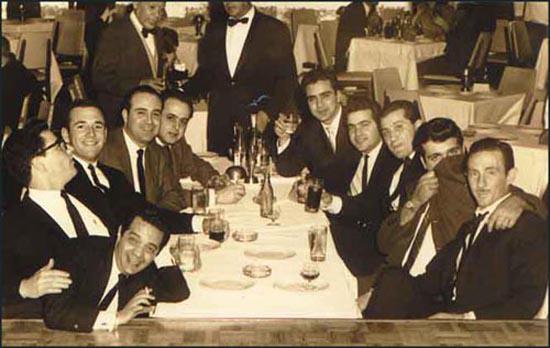
On this day in 1961 he first American troops arrive in South Vietnam. John F. Kennedy was elected president of the United States in November, 1960. In the first speech he made to the American public as their President, Kennedy made it clear that he intended to continue Eisenhower's policy of supporting Diem's South Vietnamese government. He argued that if South Vietnam became a communist state, the whole of the non-communist world would be at risk. If South Vietnam fell, Laos, Cambodia, Burma, Philippines, New Zealand and Australia would follow. If communism was not halted in Vietnam it would gradually spread throughout the world. This view became known as the Domino Theory. Kennedy went on to argue: "No other challenge is more deserving of our effort and energy... Our security may be lost piece by piece, country by country." Under his leadership, America would be willing to: "pay any price, bear any burden, meet any hardship, support any friend, oppose any foe to assure the survival and success of liberty."
Kennedy's speech had a considerable impact on many young Americans. Philip Caputo was one of those who traced back his decision to join the US Marines to Kennedy's inauguration speech: "War is always attractive to young men who know nothing about it, but we had also been seduced into uniform by Kennedy's challenge to "ask what you can do for your country" and by the missionary idealism he had awakened in us... we believed we were ordained to play cop to the Communists' robber and spread our own political faith around the world."
When Kennedy became President he was given conflicting advice on Vietnam. Some, like President Charles De Gaulle of France, warned him that if he was not careful, Vietnam would trap the United States in "a bottomless military and political swamp." However, most of his advisers argued that with a fairly small increase in military aid, the United States could prevent a NLF victory in South Vietnam.
Kennedy agreed and in 1961 he arranged for the South Vietnamese to receive the money necessary to increase the size of their army from 150,000 to 170,000. He also agreed to send another 100 military advisers to Vietnam to help train the South Vietnamese army. As this decision broke the terms of the Geneva Agreement, it was kept from the American public.
